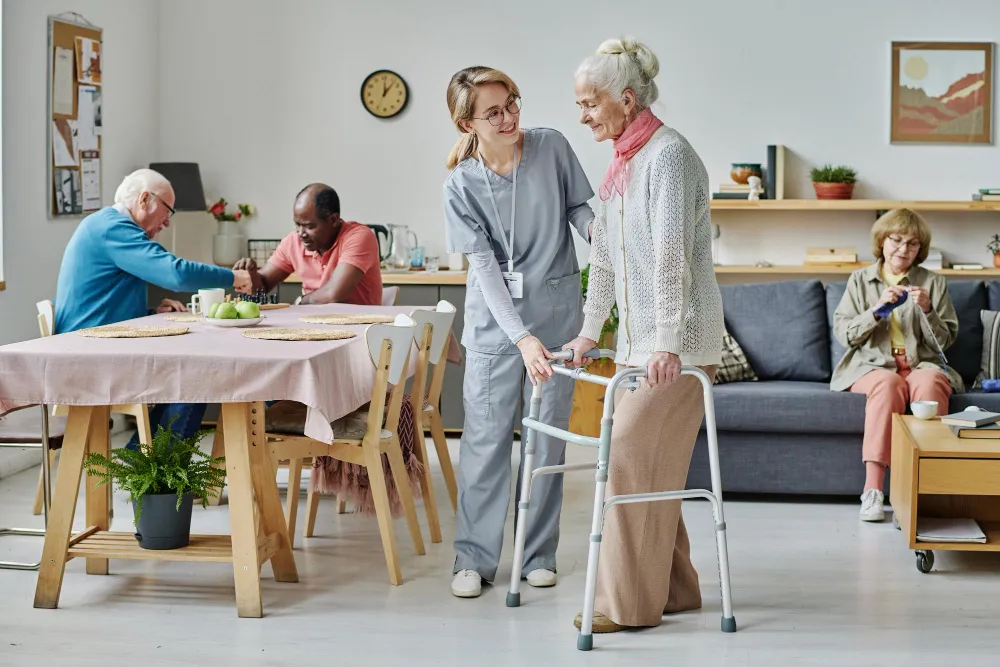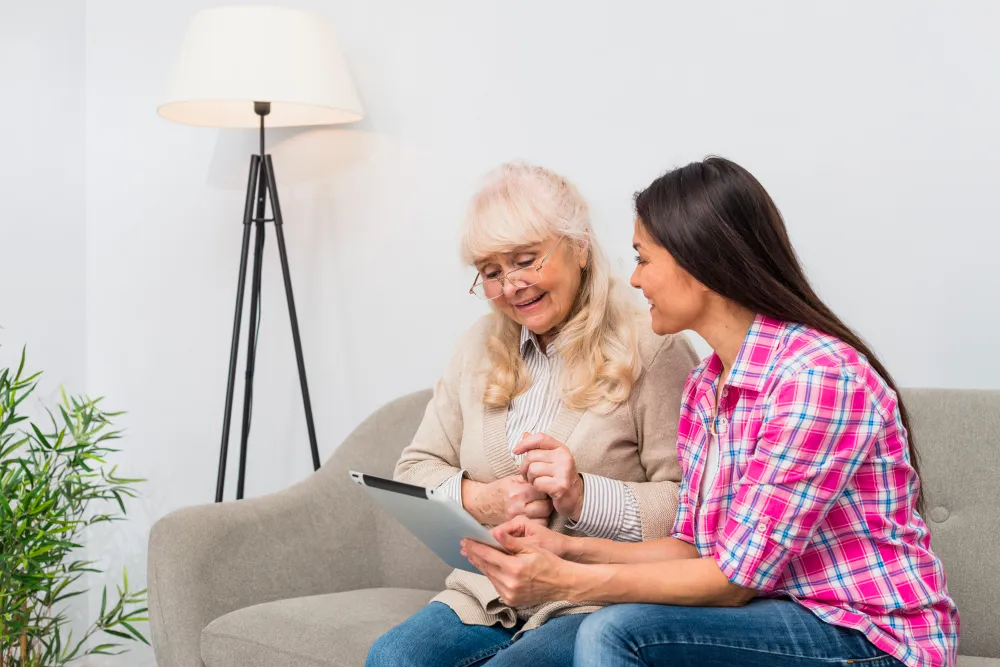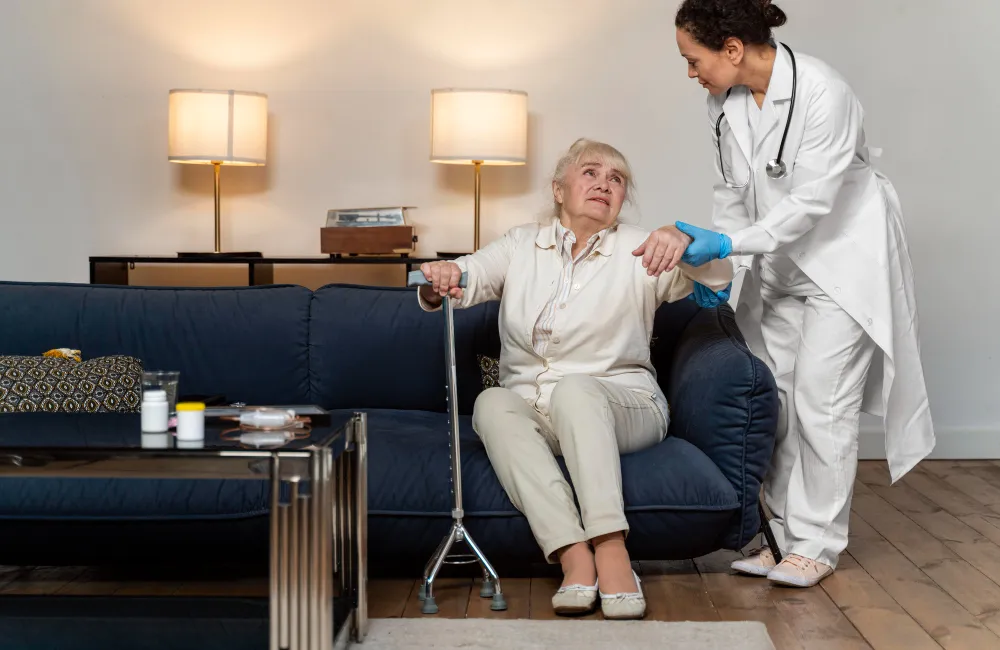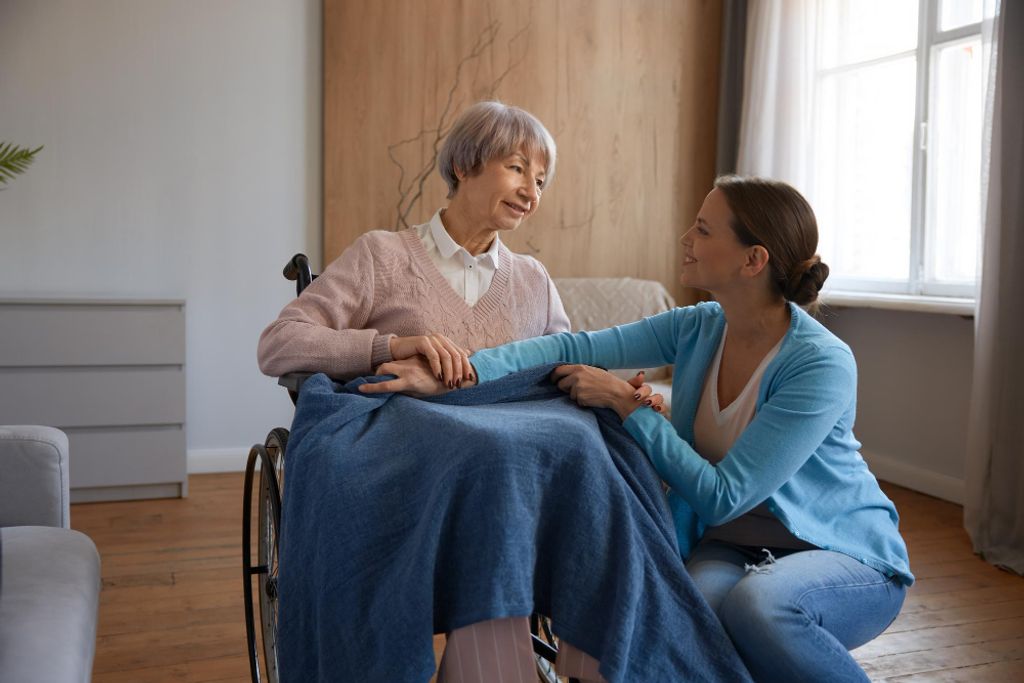Moving a parent into assisted living is a big life change. It affects routines, roles, and emotions for everyone in the family. Your mom may feel relieved that help is close by. She may also feel grief, worry, or anger. These feelings are normal. With steady support and a clear plan, you can help her settle in, feel safe, and regain a sense of control and purpose.
Assisted living is common. In the United States, there are about 32,231 residential care communities with roughly 1,016,400 residents. That scale means many families walk this road each year, and there are proven steps that make the transition easier.
Why The Move Can Feel Hard?
A move can unsettle anyone, but older adults face special stressors. Health changes, loss of a spouse, and giving up a longtime home can all pile up. Clinicians even use a term for the cluster of symptoms that can follow a move to long-term care: relocation stress syndrome. It shows up as anxiety, confusion, sadness, sleep problems, and loneliness, especially in the early weeks after the move. Knowing the signs helps you respond quickly.
Social disconnection can make adjustment harder. About one in three adults in the U.S. reports feeling lonely, and loneliness raises the risk of depression, heart disease, stroke, dementia, and early death. That is why building social connections is a core part of any adjustment plan.
Depressed mood is also common in residential settings. One multi-state study found that 13 percent of assisted living residents met criteria for depression, and many more showed frequent symptoms like worry, rumination, and tearfulness. Early action matters because untreated depression can slow recovery and sap motivation to join activities.
What To Expect In The First Weeks?

Expect mixed feelings. Many residents need time to learn the layout, meet staff, and try the daily routine. Normal adjustment includes short-term sleep changes, more calls home, or some irritability. Red flags include sustained sadness, withdrawal from meals and activities, or rising confusion.
If you see those signs, talk to the nurse or administrator and loop in your mom’s primary care clinician. Ask about a mood screen and a medication review. That kind of team approach helps catch problems early and supports a calmer settling-in period.
Evidence shows that moves can be linked to declines in mood and function without the right supports, so early attention is vital.
Step One: Involve Mom In Every Decision You Can
Control and choice reduce distress. Even small choices count. If possible, include your mom when you select the community, the apartment, and the move date. Let her decide where the favorite chair goes, which photos hang first, and what to bring for the first week.
Bring familiar bedding. Label drawers and closets in clear, large print. Create a simple “first-day” routine that mirrors her old mornings. These steps anchor memory and comfort. They also send a clear message: this is her home.
Step Two: Build Social Connection From Day One
Connection is medicine. The National Institute on Aging reports that older adults who engage in meaningful social and activity programs tend to feel happier and less depressed. They also face lower risks for dementia and heart disease compared with peers who remain inactive.
Help your mom try one or two activities she might enjoy during the first week, then add more as energy returns. A low-pressure start works best.
The health case for connection is strong. National reviews and the U.S. Surgeon General highlight links between poor social connections and higher risks of coronary heart disease, stroke, dementia, depression, anxiety, and premature mortality. Your goal is to build a weekly rhythm that keeps your mom around people she likes and trusts.
Step Three: Set A Steady Visiting And Calling Rhythm

Frequent, predictable contact eases the move. Early on, shorter visits can work better than one long, tiring day. Try a repeatable pattern your mom can name, like “I come Tuesdays after lunch and Saturdays at 10.” Add a regular call on off-days. Consistency helps the brain adjust and gives your mom something near-term to look forward to.
Family presence matters in long-term care. Research on social connection in these settings ties a stronger connection to better mental health outcomes, and studies during and after the pandemic show that video visits with family can reduce depression and loneliness when in-person visits are hard. Ask staff to help set up a simple video routine if distance is an issue.
Step Four: Partner With The Care Team And Use The Care Plan
Ask the community to schedule a care plan meeting in the first month. Bring a one-page “About Mom” profile: preferred name, daily schedule, comfort foods, music she loves, hobbies, mobility needs, faith practices, and topics that lift her mood. Share what stress looks like for her and what calms her.
When staff understand your mom’s history and preferences, they can greet her by name, offer the right activity at the right time, and cue routines that feel familiar. That personal touch can blunt relocation stress and encourage faster participation in daily life.
Step Five: Encourage Movement And Purpose
Help your mom choose at least one movement activity that fits her ability, such as a morning stretch group, chair yoga, or short indoor walks. Purpose also matters.
Volunteering inside the community, reading to other residents, folding activity room linens, watering plants, or helping at the front desk during busy hours can restore a sense of value. The NIA notes that activities that feel meaningful are linked with better mood, resilience, and even longer life.
Step Six: Keep The Family Stories Flowing
.BgE0RUEB_2pJWdE.webp)
Distance often makes families worry. Regular, tangible updates can calm nerves and lift your mom’s mood, especially if she misses home. Consider simple routines like mailing two photos with a note each week. You can also use a monthly family journal so she gets a steady stream of news.
One option is Hug Letters, a monthly family newspaper designed for grandparents. Each month, your family uploads photos and short stories in the app. The team behind Hug Letters lays out, prints, and mails a warm, photo-rich newspaper that arrives in your mom’s mailbox at the start of the month. It feels personal, it is easy to read, and it gives her something to share with friends and staff.
Hug Letters is already loved by more than 1,000 families, which speaks to how much small, regular touchpoints matter to older relatives. When you cannot visit, a printed journal keeps family life present in your mom’s new home and invites conversations with people around her.
These kinds of ongoing social touchpoints are not gimmicks. They build connection, and strong social connection protects health. National reviews link better social connection with improved mental health and even lower risks of several major diseases. A tool like Hug Letters can help you make that connection steady and predictable.
Step Seven: Watch Mood And Energy, Then Act Early
Keep a simple notebook during the first three months. Jot down sleep, appetite, activity attendance, and notable ups or downs in mood. Patterns tell a story. If you see low mood most days for more than two weeks, or if sleep and appetite drop, speak with the nurse and your mom’s clinician.
Ask for a depression screen and a plan. In assisted living, depression shows up in many ways, from flat mood to worry, and staff can miss it if family does not flag changes. Early treatment helps.
Step Eight: Align Medication And Medical Follow-Up

Any move can disrupt medication timing. During the first week, review your mom’s medication list with staff to confirm times and doses. Ask about side effects that might worsen confusion or fatigue.
Schedule follow-ups for hearing, vision, and dental care. When people hear and see well, they join in more and feel less isolated. Improved engagement reduces the risk of the health harms tied to social isolation.
When Distance Makes Visits Hard
If you live far away, build a support net. Ask a local friend, relative, or faith contact to visit once a week for the first month. Set up a rotating call schedule for siblings. Mail photos on a set day, and keep the Hug Letters subscription so a fresh family newspaper lands each month.
The steady flow of familiar faces and stories supports emotional health. This is not just a nice idea. Public-health guidance shows that social isolation and loneliness harm health, while better social connection protects it.
Final Thoughts
Your mom is not just moving to a new address. She is rebuilding parts of her identity in a new place. The most helpful gifts you can bring are time, patience, and structure. Keep decisions in her hands where you can. Build a simple routine of visits, calls, activities, and family stories. Use the care team.
Watch mood and energy, and act early if either slips. Tools like Hug Letters can keep family bonds strong, month after month, even when life gets busy. When the connection stays steady, confidence grows, and the new space starts to feel like home.

About Martin Gouy
Martin is the founder of Hug Letters. Hug Letters is a family newsletter for grandparents. Every month, grandparents receive a heartwarming newspaper with photos and stories from the whole family.

